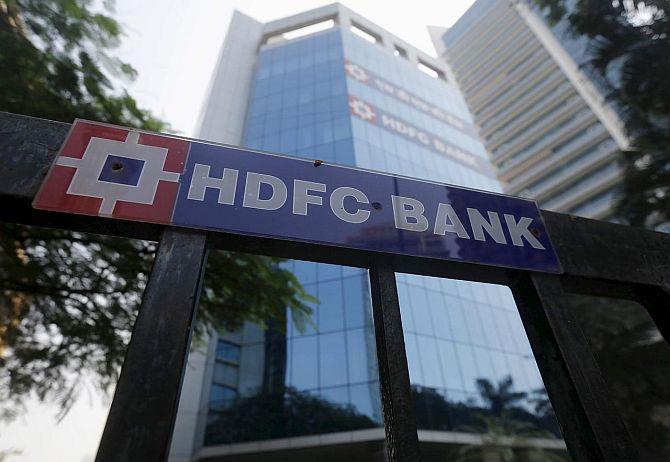The country’s most valuable lender HDFC Bank can perhaps no longer claim to be a favourite of foreign portfolio investors (FPIs).

Two data indicators, both somewhat interconnected, point to this — the diminishing premium of HDFC Bank’s American depositary receipts (ADRs) compared to local shares, and the ample investment opportunities available to FPIs in the domestic market.
The ADR premium has shrunk to below 5 per cent, down from over 30 per cent in March 2021, and even lower than recent levels.
During calendar 2023, it averaged just over 12 per cent, but last week, it dropped to 4.8 per cent, the lowest level since June 2022.
According to a note by Anjali Sinha, head of India equity sales at Macquarie Capital Securities, there is no fundamental reason for this premium to exist.
Any premium that exists is largely due to investor inertia when it comes to re-evaluating the ADR positions.
Additionally, the ample foreign investment opportunities in the domestic stock market, combined with near-term challenges on the fundamental front, do not bode well for the ADR premium, she added.
“Historically, ADR premium had been there mainly because the stock’s foreign headroom was low (local stock was restricted for FPI buying until 2018).
"There are other reasons like an easier process to invest in ADRs and tax benefits, but these reasons are valid for all the other Indian ADRs as well.
"So, none of these ADRs trade at significant premium,” Sinha said in a note.
The ADRs of HDFC Bank’s peers, such as ICICI Bank and Axis Bank, often trade at a discount to their local shares.
The interest of overseas funds in HDFC Bank has been declining post Covid-19, leading to the stock’s underperformance.
In November 2020, HDFC Bank was placed on the red-flag list maintained by depository National Securities Depository Limited (NSDL).
This list is used to monitor overseas investments in listed stocks.
And, a company is placed on it when the available room for overseas investment falls below 3 per cent of the permissible limit.
FPI investment legroom in HDFC Bank expanded, following its recent $40-billion merger with parent company, Housing Development Finance Corporation (HDFC), which had a relatively higher FPI investment room.
Immediately after the merger’s completion, foreign holdings in the merged entity stood at 60 per cent, resulting in a foreign investment room of over 19 per cent.
The bank is expected to disclose its September quarter shareholding soon, providing the latest FPI shareholding in the company.
However, given the softness in the bank’s share price, analysts are not ruling out a further expansion of the FPI investment room.
On an absolute basis, HDFC Bank is still among the top-holding of FPIs.
So, what are the fundamental factors behind the waning FPI interest in HDFC Bank?
“HDFC Bank has seen some hits on account of the merger — increase in provisioning to make up for lower provision coverage ratio of HDFC, lower net interest margin due to excess liquidity, lower deposit growth when ask rate is very high, higher non-performing loans in the real estate portfolio of HDFC and hits due to accounting norms,” Sinha said in the note.
“All this means that near-term return on assets (RoA) would be lower.
"This recovery in RoA will take two or three quarters.
"So, we are talking about almost one year of sub-par performance versus peers if you consider Q4FF23 and Q1FY24 subpar performance,” she added.
Last month, shares of HDFC Bank, the country’s third most-valued firm, fell 5 per cent in just two days after the lender indicated a potential adverse impact of the merger.
A note by Motilal Oswal suggests that the merged entity has everything in place to achieve strong profitability and growth in the coming years, but successful execution will be crucial.
“The stock has corrected 10 per cent in recent weeks and the ADR premium has also shrunk to more than 12-month lows as investors remain watchful on growth and return on equity recovery for the merged entity.
"The stock is thus trading at attractive valuations of 2.1x March FY25E adjusted book value and (about) 13x earnings per share.
"It offers a favourable risk-reward for long-term investors,” said the brokerage in a note.
Motilal Oswal has a price target of Rs 1,950 on the stock.
“Over the next three years, we expect HDFC Bank to deliver 16-17 per cent annualised growth in earnings aided by synergies from mergers (expansion of home loan network to HDFC Bank branches and cross-sell of financial products to HDFC customers) as well as ramp-up of branches to mobilise deposits.
"This growth will be much higher than global large banks' range of 3-7 per cent annualised growth rate, hence offering a strong case to be considered in large-cap bank / global portfolios,” said a note by Jefferies, which has a price target of Rs 2,030 crore.











